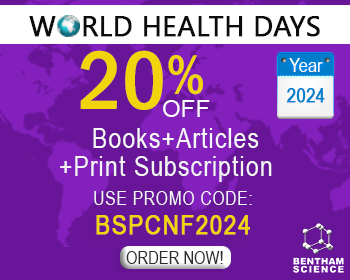Abstract
Ginseng is a traditional medicine with a complex chemical composition, wide bioactivity and unique pharmacological action. Many studies have confirmed that ginsenosides are the active ingredients of ginseng, and ginsenosides have always been the focus of different researchers. With the development of modern separation and analysis technology, more than 150 kinds of ginsenosides have been isolated. The ginsenosides Rb1, Rb2, Rc, Rg1 and Re account for more than 80% of total ginsenosides, and other saponins, such as Rd, Rg3 and Rh2, which are minor constituents, accounting for only a small portion of the total amount. In recent years, ginsenosides have been found to possess strong pharmacological activities, such as antioxidation, clearing of oxygen free radicals, reducing calcium overload and anti-apoptosis. Ginsenosides play a protective role in ischemia-reperfusion injury. This paper reviews the protective effects of ginsenosides on myocardial ischemia and ischemiareperfusion injury.
Keywords: Ginsenoside, protective effect, pharmacological action, myocardial ischemia, ischemia-reperfusion injury, MIRI.
[http://dx.doi.org/10.1016/j.amjcard.2010.03.032] [PMID: 20643246]
[http://dx.doi.org/10.1016/j.jgr.2016.06.003] [PMID: 28701873]
[http://dx.doi.org/10.1016/j.jgr.2014.03.001] [PMID: 25378989]
[http://dx.doi.org/10.1016/j.fct.2017.07.019] [PMID: 28698154]
[http://dx.doi.org/10.1172/JCI113771] [PMID: 2460503]
[PMID: 18772102]
[http://dx.doi.org/10.1016/j.jgr.2017.01.001] [PMID: 28701880]
[http://dx.doi.org/10.1016/j.procbio.2010.04.026]
[http://dx.doi.org/10.1016/j.jgr.2017.01.008] [PMID: 29719458]
[http://dx.doi.org/10.1631/jzus.B1400204]
[http://dx.doi.org/10.3892/mmr.2015.3336] [PMID: 25672441]
[http://dx.doi.org/10.1038/sj.bjp.0704377] [PMID: 11704635]
[http://dx.doi.org/10.1007/s10557-008-6129-4] [PMID: 18679782]
[http://dx.doi.org/10.1155/2011/767930] [PMID: 22013385]
[http://dx.doi.org/10.1093/cvr/cvp063] [PMID: 19221132]
[http://dx.doi.org/10.1161/01.RES.0000187456.06162.cb] [PMID: 16179590]
[http://dx.doi.org/10.1016/j.ejphar.2006.08.001] [PMID: 16973156]
[http://dx.doi.org/10.1016/j.jgr.2014.11.003] [PMID: 26045691]
[http://dx.doi.org/10.5142/jgr.2013.37.451] [PMID: 24235859]
[http://dx.doi.org/10.1016/j.lfs.2011.02.011] [PMID: 21338613]
[http://dx.doi.org/10.3390/molecules22071232]
[http://dx.doi.org/10.1016/j.jgr.2017.01.015] [PMID: 29719463]
[http://dx.doi.org/10.1172/JCI117504] [PMID: 7929838]
[http://dx.doi.org/10.1161/01.RES.79.5.949] [PMID: 8888687]
[http://dx.doi.org/10.1161/01.RES.61.5.757] [PMID: 2822281]
[PMID: 20586665]
[http://dx.doi.org/10.1371/journal.pone.0050515] [PMID: 23226300]
[http://dx.doi.org/10.1038/nsmb.1533] [PMID: 19079265]
[http://dx.doi.org/10.1139/cjpp-2014-0164] [PMID: 26550918]
[http://dx.doi.org/10.1016/S0092-8674(04)00046-7] [PMID: 14744432]
[http://dx.doi.org/10.1371/journal.pone.0070956] [PMID: 23976968]
[http://dx.doi.org/10.1016/j.jgr.2016.08.004] [PMID: 29021688]
[http://dx.doi.org/10.1371/journal.pone.0103628] [PMID: 25084093]
[http://dx.doi.org/10.5142/jgr.2013.37.283] [PMID: 24198653]
[http://dx.doi.org/10.1155/2016/6967853] [PMID: 28105061]
[http://dx.doi.org/10.1016/j.jgr.2016.11.005] [PMID: 29021704]
[http://dx.doi.org/10.1016/j.jgr.2013.11.014] [PMID: 24748831]
[http://dx.doi.org/10.3390/ijms13055729] [PMID: 22754327]
[http://dx.doi.org/10.1038/cddis.2017.43] [PMID: 28230856]
[http://dx.doi.org/10.3389/fphys.2018.00078] [PMID: 29467677]
[http://dx.doi.org/10.1016/j.jss.2014.04.042] [PMID: 24881470]
[http://dx.doi.org/10.1038/srep44579] [PMID: 28327605]
[http://dx.doi.org/10.1021/acs.joc.6b01265] [PMID: 27400182]
[PMID: 28579568]
[http://dx.doi.org/10.1055/a-0770-0994] [PMID: 30380571]
[PMID: 26012249]
[PMID: 17966755]
[http://dx.doi.org/10.1016/j.jgr.2016.03.002] [PMID: 28413322]
[http://dx.doi.org/10.1016/j.jgr.2019.01.005] [PMID: 32095093]
[http://dx.doi.org/10.1016/j.jgr.2015.02.002] [PMID: 26869821]


























